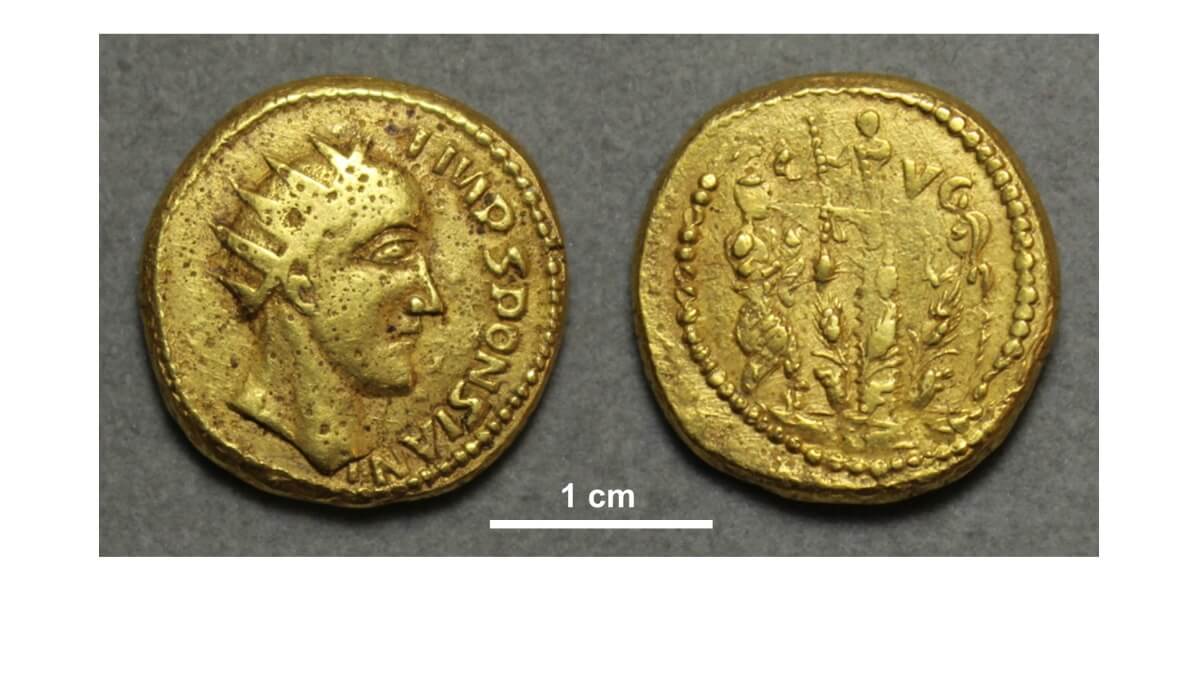A new analysis of what were commonly considered “fake” Roman coins spark a new debate about the lost Roman emperor depicted on them – was he real or a hoax?
The Roman coins in question were discovered in 1713 in Transylvania, Romania and depicted an emperor called “Sponsian”, of which no historical records or mention was to be found since.
This prompted many experts to believe the coins to be an elaborate forgery but, according to this new research from the University of Glasgow, that might be the wrong conclusion to draw.
According to a recent paper published in the journal PLoS ONE, researchers from the University of Glasgow and University College London undertook the first scientific analysis of these Sponsian coins – more than a century after historians dismissed them as fakes.
One of the coins was held in the Hunterian collection at the University of Glasgow, the other in the Brukenthal National Museum in Sibiu, Romania.
Co-author Paul Pearson of University College London first discovered the Hunterian coin while researching a book about the history of the Roman empire. The multiple fine scratches he could see on it led him to believe that the coin might have been in circulation, rattling around in purses or pouches, and not just forgeries held safely until they could be sold.
This prompted him and his co-authors to submit the coins to multiple analysis, from classic light microscopy, ultraviolet imaging, scanning electron microscopy, and reflection mode Fourier-transform infrared spectroscopy.
What they found is that the signs of wear and tear are similar to those commonly found on authenticated, genuine Roman coins, and that indeed they were buried for centuries before being discovered. This finding contradicts the expertise of French numismatist Henri Cohen who, in 1868, said the Sponsian coins are “very poor quality modern forgeries”.
The findings also indicate that Sponsian is indeed a long-lost Roman emperor, though some are still on the fence.
“The authors believe Sponsian may have assumed command as imperator (“supreme military commander”) of Dacia when the population was cut off from the rest of the empire, surrounded by hostile enemies.
Given their mining resources, Dacia could have minted their own coins with Sponsian’s image, which would have helped cement his authority and maintain economic stability and social order until the area was finally evacuated between 271 and 275 CE,” explains ArsTechnica in a fantastic sum-up about the analysis, expanding on the context in which Sponsian might have ruled the territory now occupied by Romania.
During that period, the Roman empire was seriously shaky on all fronts: the Plague of Cyprian pandemic ravaged the population, barbarian invasions increased in number and Emperor Severus Empire was assassinated by his own troops, sparking multiple conflicts for power. Dacia, a region far from Rome’s influence, could have been ruled for a short period by someone who proclaimed themselves emperor and minted a coin.
However, while some experts are taking the new analysis of the coins to be proof that Sponsian was indeed a ruler of Dacia and a Roman emperor, other researchers and history buffs claim that the conclusion is a far-fetched one.
“It’s circular evidence. They’re saying because of the coin there’s the person, and the person therefore must have made the coin,” said Richard Abdy, curator of Roman and iron age coins at the British Museum. “It’s circular evidence. They’re saying because of the coin there’s the person, and the person therefore must have made the coin.”
To see how the researchers try to prove both the coin’s authenticity and Sposian’s existence, take a few minutes to go through the paper published by the researchers and the accompanying announcement.
Also read: This Ancient Stone Carving Is Just 1.5 Inches Wide, Shocks Scientists With The Amount of Detail
Follow TechTheLead on Google News to get the news first.























